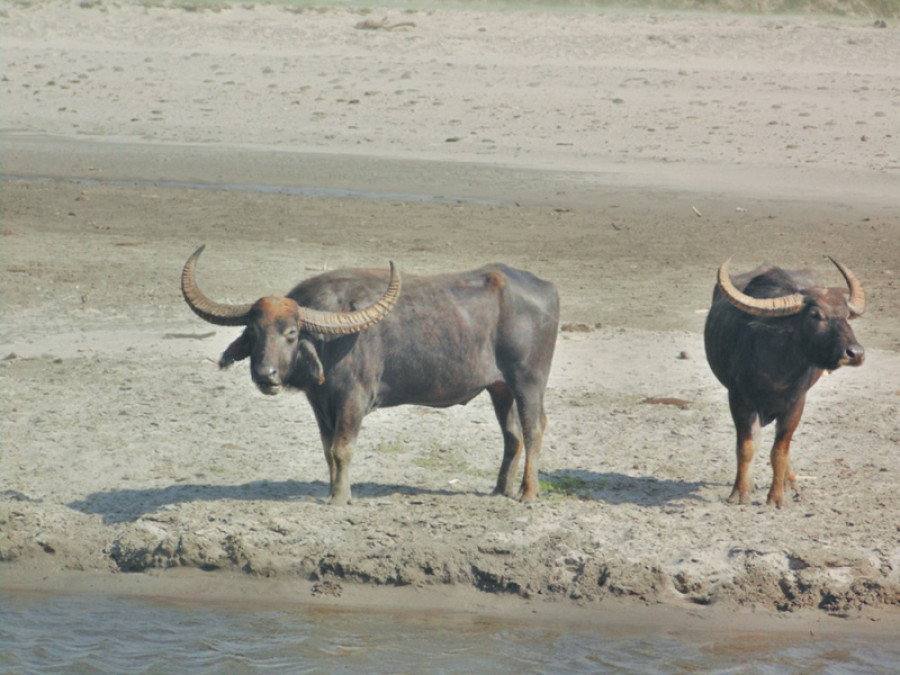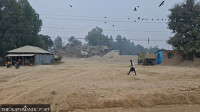National
CNP gets 11 wild water buffaloes in 12 days
As many as 11 wild water buffaloes (Bubalus arnee) have been relocated to the Chitwan National Park (CNP) from the Koshi Tappu Wildlife Reserve (KTWR) and Central Zoo in the last 12 days, in a move aimed at increasing the population of the species locally called Arna.
As many as 11 wild water buffaloes (Bubalus arnee) have been relocated to the Chitwan National Park (CNP) from the Koshi Tappu Wildlife Reserve (KTWR) and Central Zoo in the last 12 days, in a move aimed at increasing the population of the species locally called Arna.
The first of the pair was relocated from the KTWR to the CNP in the last week of January.
Ten wild water buffaloes, including two males, from the KTWR and one male from the Central Zoo have been brought here so far, said CNP chief Ramchandra Kandel.
The Koshi Tappu Wildlife Reserve was earlier considered the only habitat of wild water buffaloes. The population of these wild animals stood at 63 when the reserve was established in 1976, according to WWF Nepal.
But the number of these animals has steadily grown in the last four decades, and according to a count in 2016, the number of individuals had grown to 432, according to WWF Nepal.
Though the government had decided to bring wild water buffaloes to the CNP two years ago, considering that the country’s biggest national park would offer a great habitat for the species, preparation for the capture and release started in December last year.
So far 11 wild water buffaloes have been released in the CNP and two more will be arriving soon, said CNP Information Officer Nurendra Aryal.
Translocating wild water buffaloes to their former range in Chitwan is a great option as it provides one of the best habitats within Nepal to create a second viable population other than the KTWR, according to WWF Nepal, which described the first ever translocation of the wild water buffaloes last month as a “historic day” in the conservation of wild water buffaloes.
Concentration of the species in only on habitat means they are under constant threat of being extinct in the event of natural calamities such as flood, fire and epidemics within the habitat, and hence plans were being made to relocate wild water buffaloes from the KTWR to the CNP.
Wild water buffaloes are believed to be extinct in Bangladesh, Peninsular Malaysia and on the islands of Sumatra, Java, and Borneo of Indonesia.
The main objective of translocating wild water buffaloes from the KTWR is establishing a second ecologically viable population in the CNP, increasing their chance of survival in the event of natural calamities.
Nepal has the second highest population of will water buffaloes in the world, according to WWF Nepal, and conservation of these animals is as important as other major species like rhino, tigers and snow leopards.




 17.12°C Kathmandu
17.12°C Kathmandu














